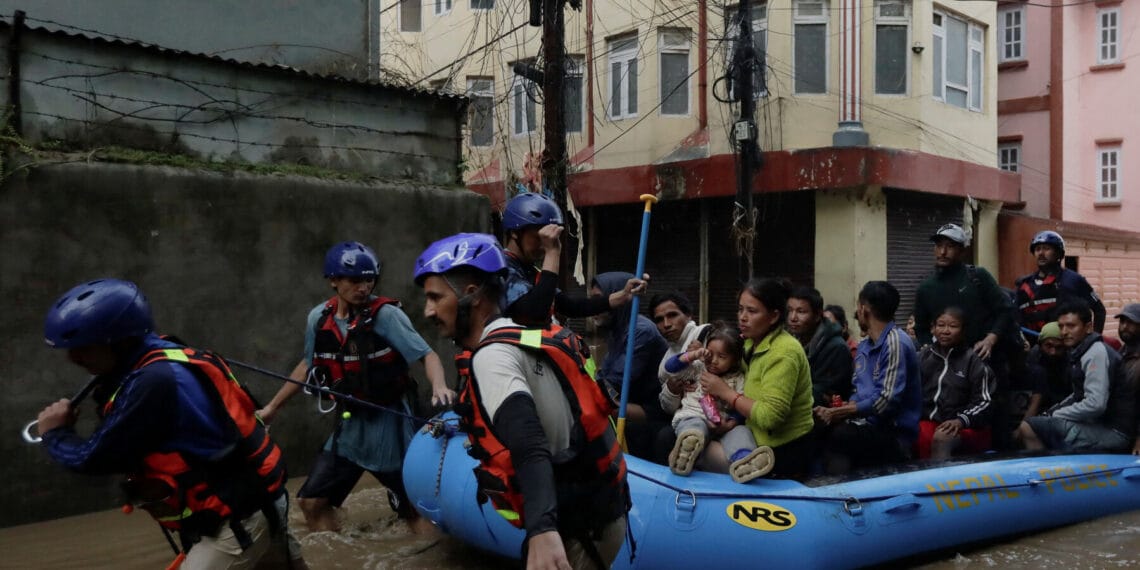The Gist
The small Himalayan nation is facing a rise in disasters, which are becoming more frequent due to climate change. This nation, known for its beautiful landscapes and unique culture, is now seeing negative effects from global warming. These disasters include heavy rains, landslides, and melting glaciers, which threaten both the environment and the livelihoods of local residents.
The increased frequency of such disasters is alarming. Many people are at risk of losing their homes, farms, and even their lives. As the climate continues to change, it is likely that more extreme weather events will occur. This situation calls for urgent action to address climate change and help the affected communities adapt to the new realities they face.
The Good
- Awareness Raising: Increasing reports on disasters can raise global awareness about climate change, prompting more people to take action.
- Community Action: Local communities might come together to support each other, building resilience against future disasters.
- Policy Changes: Governments and organisations could be encouraged to implement better policies and practices for disaster preparedness and environmental sustainability.
- Innovation and Technology: There may be advancements in technology to help monitor weather patterns and predict disasters, keeping communities safer.
- International Support: Countries and international organisations might be motivated to provide aid and resources to help the Himalayan nation recover and adapt.
The Bad
- Increased Vulnerability: More frequent disasters can make communities more vulnerable, leading to loss of life and property.
- Economic Strain: The costs of recovery from disasters can drain local economies, making it harder for families to rebuild their lives.
- Environmental Damage: Disasters can destroy critical ecosystems, which are essential for biodiversity and local livelihoods.
- Migrant Pressures: As areas become uninhabitable, people may be forced to migrate, leading to overcrowding in safer regions.
- Health Risks: Increased disasters can cause health risks from injury, disease spread, and lack of access to clean water and sanitation.
The Take
The Himalayan nation, rich in culture and stunning landscapes, is experiencing a notable rise in the frequency of natural disasters, primarily attributed to climate change. This shift is not simply a local problem; it reflects a broader global issue impacting many regions across the world. Recently, the country has faced heavy rainfall that has resulted in dangerous landslides, flooding, and significant glacier melting. Such extreme weather events have been connected to rising global temperatures, caused largely by human activities like burning fossil fuels, deforestation, and industrial pollution.
Due to the geographical location of this nation, the results of climate change are devastating, leading to a situation where natural resources become scarce and communities lose their homes and livelihoods. Farmers, who traditionally rely on predictable weather for crops, find themselves struggling as seasons change unpredictably and severe weather patterns develop. This situation presents an urgent need for local and global action to combat climate change and its pernicious effects.
The impacts of climate change are not just environmental; they also affect social and economic stability. As families are displaced, they face financial hardships that can lead to deeper poverty and increased health risks. The scale of the destruction caused by natural disasters can overwhelm local governments, which may struggle to provide adequate support and resources. Recovery efforts often take years, affecting education and employment opportunities for children and adults alike.
However, there is hope that increased awareness and understanding of the issue can bring about positive change. Community-led initiatives are emerging, where people work together to help each other recover and to prepare for future disasters. This spirit of collaboration can bolster resilience, providing a powerful tool against the impact of climate change. At the same time, the international community is becoming more aware of its responsibility to help nations like this Himalayan country in times of need.
Overall, tackling climate change requires global cooperation, innovative technologies, and a commitment to sustainable practices. As the world looks towards a more sustainable future, it is crucial that we heed the warnings from countries like the Himalayan nation suffering from intensified climate-related disasters. This is a pivotal moment when people must come together to protect the planet—our only home—and ensure that future generations are not burdened by the consequences of our inaction today.
Click here to read the full article





































































